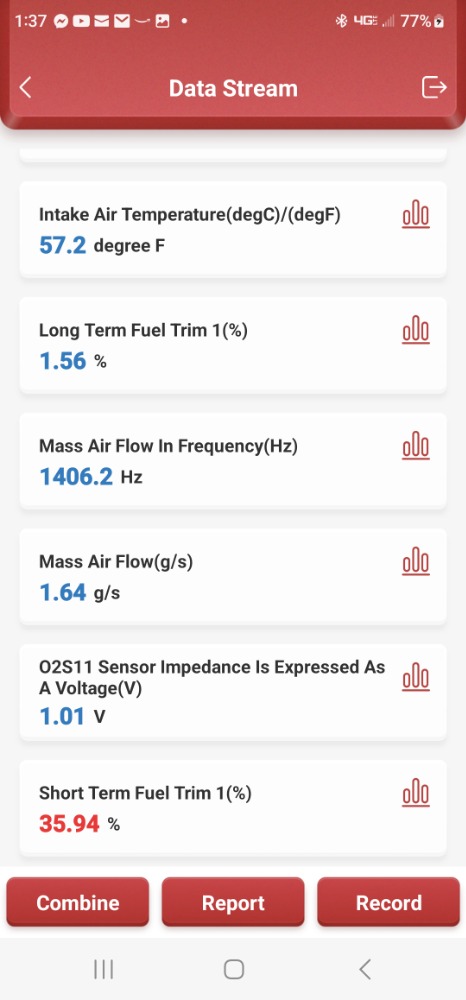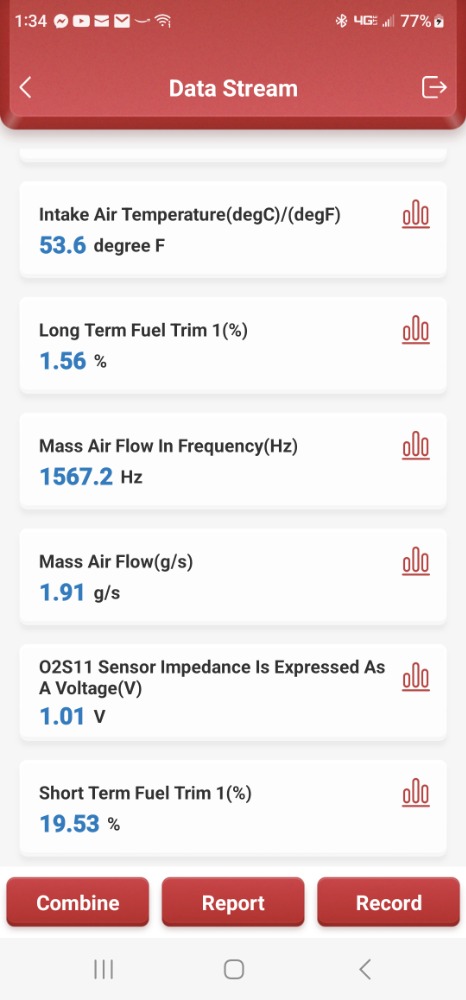I don't want the answer of the problem handed to me I want to learn. If you guys could give me some advise I would greatly appreciate it thank you Zachary
No problem.

To be honest, I see this "____ impedance expressed as a voltage" PID on Ford products sometimes, and I have zero idea what it's good for. :silly: But I do know this is a wideband upstream oxygen sensor, so (IMO) the better PIDs to use would be Equivalence Ratio and sensor current.
Equivalence Ratio is a measure of the exhaust gas mixture. 1.000 is stoichiometric. Values above that are lean, values below that are rich. The EQ value is derived from the sensor current, usually measured in mA. 0 mA is stoich. Positive values are lean, negative values are rich. Here's an example from a known good Ford (different engine, but the principles are the same):
www.scanshare.io/share/bhO79xS3D0WA_fBN1PwFww#8,9,10,11,36,40
When looking at your fuel trims and oxygen sensor values, you'll also want to take note of the Loop status. That'll tell you if the trim values you're seeing are part of the closed loop feedback, or a function of an open loop 'backup' strategy.
I think a good first test would be to look at the short/long trims, loop status, upstream sensor current and downstream sensor voltage. You can compare the upstream sensor signal against the downstream to check for rationality. As in, the upstream sensor may be reading very lean. Does the downstream agree? If yes, the engine probably is very lean. If no, someone is lying.



